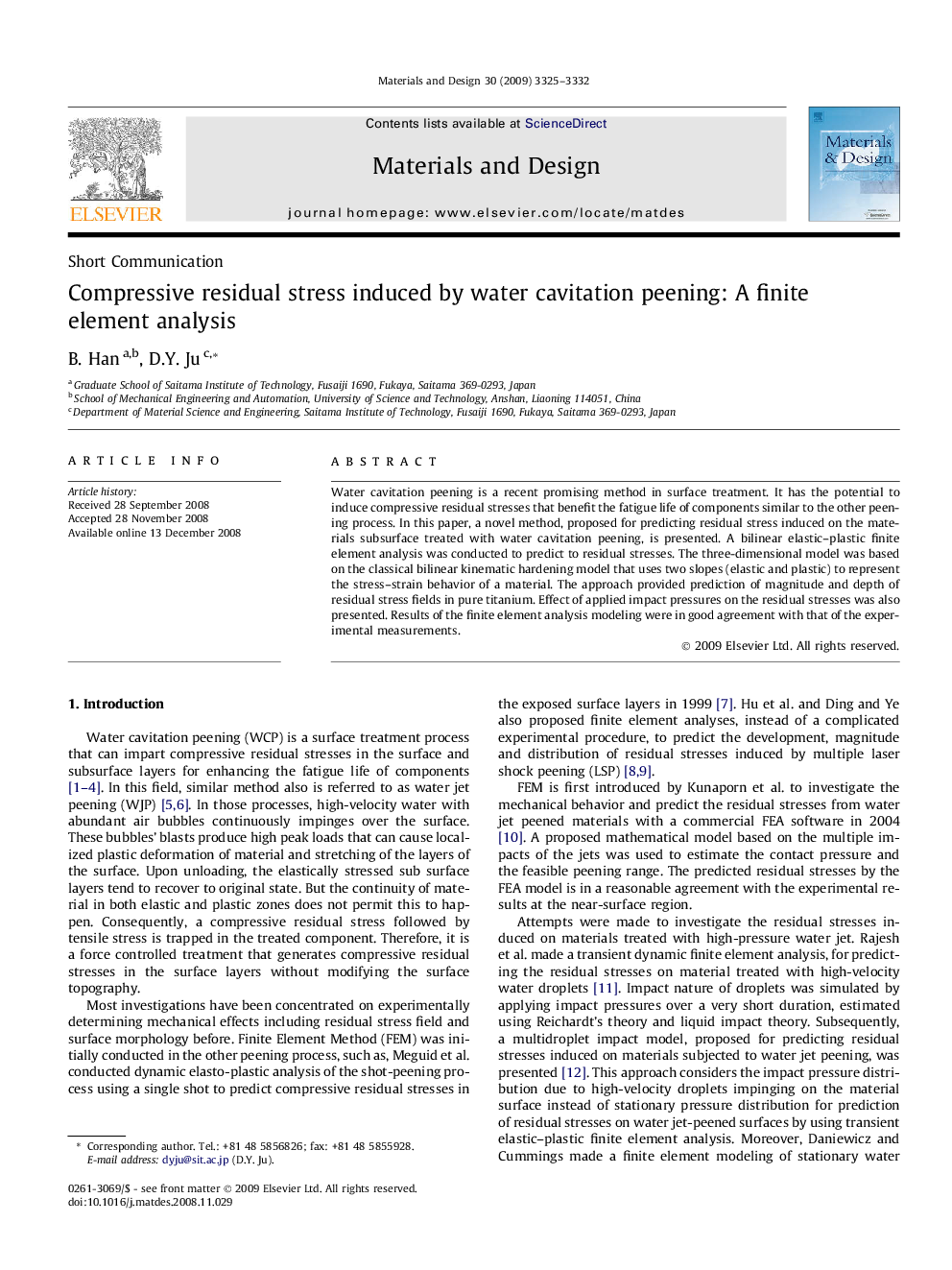| Article ID | Journal | Published Year | Pages | File Type |
|---|---|---|---|---|
| 832614 | Materials & Design (1980-2015) | 2009 | 8 Pages |
Water cavitation peening is a recent promising method in surface treatment. It has the potential to induce compressive residual stresses that benefit the fatigue life of components similar to the other peening process. In this paper, a novel method, proposed for predicting residual stress induced on the materials subsurface treated with water cavitation peening, is presented. A bilinear elastic–plastic finite element analysis was conducted to predict to residual stresses. The three-dimensional model was based on the classical bilinear kinematic hardening model that uses two slopes (elastic and plastic) to represent the stress–strain behavior of a material. The approach provided prediction of magnitude and depth of residual stress fields in pure titanium. Effect of applied impact pressures on the residual stresses was also presented. Results of the finite element analysis modeling were in good agreement with that of the experimental measurements.
